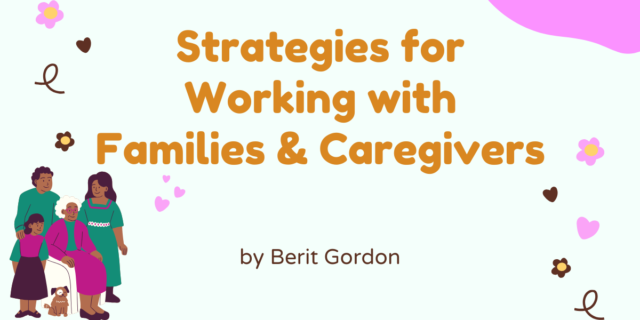
Here are a few truths.
If we want to truly make a change in education, we need a school to call home. This means we have to kick our feet up and stay a while. This also means that we should be intentional about what homes we enter.
As teachers we should feel empowered to be intentional. First, this means we need to look inward. We must always hold our whys close to us. Understanding our why and where we come from helps us to develop our own set of values. During my first five years of teaching, I did not think about my own values until I knew that they were being violated. All teachers, regardless of the number of years in the profession, should know what they value.
Then, you must search, find, and vet schools. This is where we determine if a school is right for you, if it is a place where you have room to make change long term and grow along the way. I will never tell you what to look for in a school. This is your decision. Every institution is different: varying histories, flaws, opportunities, strengths.
I did not choose my first school, it chose me.
After graduating from Michigan State’s elementary education program, I panicked. My degree was conferred but $20,000 of loans and returning home to student teach unpaid stood between me and a certification. I joined Teach for America instead; this was the most affordable pathway for me to join the profession. This was my career.
As our cohort settled in our new home, Teach for America’s DC region wanted us to know about a very strict policy called “the first offer.” The policy was clear: you could interview with as many schools as you could earn. However, you must accept the first school that offers you a contract. Sort of like divine intervention.
Only a few days after I submitted my resume into the pool, I had a phone interview with an award-winning charter school. Twenty-four hours later they sent over my first offer. The school and TFA’s sense of urgency left me out of breath. Before I could truly listen to my gut, I was signing the paperwork to join their new elementary school, only in its third year of operation.
And I’m not gonna sit here and lie to you. I drunk all of the Kool-Aid during summer PD. The energy transported me back to summer camp . . . almost. We were singing songs and clapping to call-and-responses. Teachers were passionate and enthusiastic; our leadership team was welcoming and encouraging. All of the feelings a new teacher needed to breathe.
We carried the momentum into curriculum design and first-day prep. We were paired with co-teachers in every classroom. Together our task was simple: create a packet for each student, for each subject, for each day. Practice classroom procedures for every physical action you wanted students to perform, from the raising of their hands to the locking of their fingers. This was teaching. Although packets covered the radiator and my clothes were laid out, the night-before-school jitters took over me. On my first day of school, I was optimistic.
You already know what happens next. I walked into my first classroom.
Innocent wide eyes.
Good intentions.
Fragile confidence.
And fresh packets.
Every plan corkscrewed. Lying between the extremes of my students’ needs and my school’s strict expectations about procedures, I stood in shock, voiceless.
My classroom was theme park chaotic:
lots of screaming,
running,
and tears.
I stayed after school until 6 p.m. preparing for the next day, just to fail. It chipped away at my ego and confidence bit by bit. And when I would finally get a moment to myself, I questioned if I truly belonged in this profession.
When teachers make a long-term commitment to their schools, it allows them to grow as professionals. Students are more likely to have greater academic and social gains. And communities and families are guaranteed to benefit. It’s not just better for you; it’s better for your students and it’s better for the community you serve. We owe it to ourselves, our children, and our communities to find a school to call home. |
Though I knew it was the right thing to do, leaving my school was not easy. I did not want to be a part of those statistics, like the one from the Learning Policy Institute (2017a) that states that the education profession sees a 16 percent turnover rate each year: 8 percent leave the profession, and 8 percent go to other schools. And that six in ten new hires in schools are replacing teachers prior to retirement. Education has a revolving door moving at warp speed. And I knew what my leaving would do to a school in Southeast DC. Turnover is not cheap. Districts in urban areas pay the highest cost, roughly spending up to $20,000 to invest in a new hire and not seeing the full benefit of the training and investment.
Teaching has always been my dream, so I just kept asking myself why. Why did I have to leave? Because that school was in direct conflict with my own values. We were not in alignment, and they were not budging. Even if I chose to tough it out, I would not be able to do my best work there. I would not have an impact on students and that feeling of inner disappointment would ripple. I knew it would lead me not only to leave my school but abandon my profession. I was not willing to risk this.
Believe me when I say, there is a school out there for you. In order to find it, we must do our homework. I will say it again. Do not settle for a home in which your values are directly violated. This work is especially important for new teachers. As a new teacher, I was often told that I just needed to sit back and learn for the first five years, no matter where I was. Most times when we talk about the needs of new teachers, we think about them from a deficit mindset. But new teachers have value. They walk in the door with strengths and experiences. Teachers within their first five years should especially be picky in choosing their institution as it will shape how long they stay in the classroom and the profession overall. We are like sponges in our first years and incredibly sensitive. Our first schools play a large role in shaping the educator we become. As new teachers, we have to choose our schools wisely. There’s no perfect school. Every school has its flaws. But what we have to determine in these first five years is whether the institutional issues at your school are in direct conflict with your values as a teacher. And if so, do you have the room, the group, the capacity to create change?

To learn more about The First Five visit Heinemann.com.


